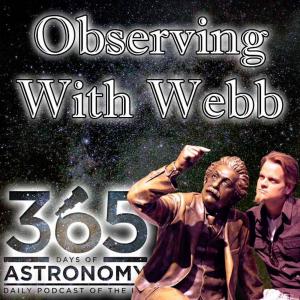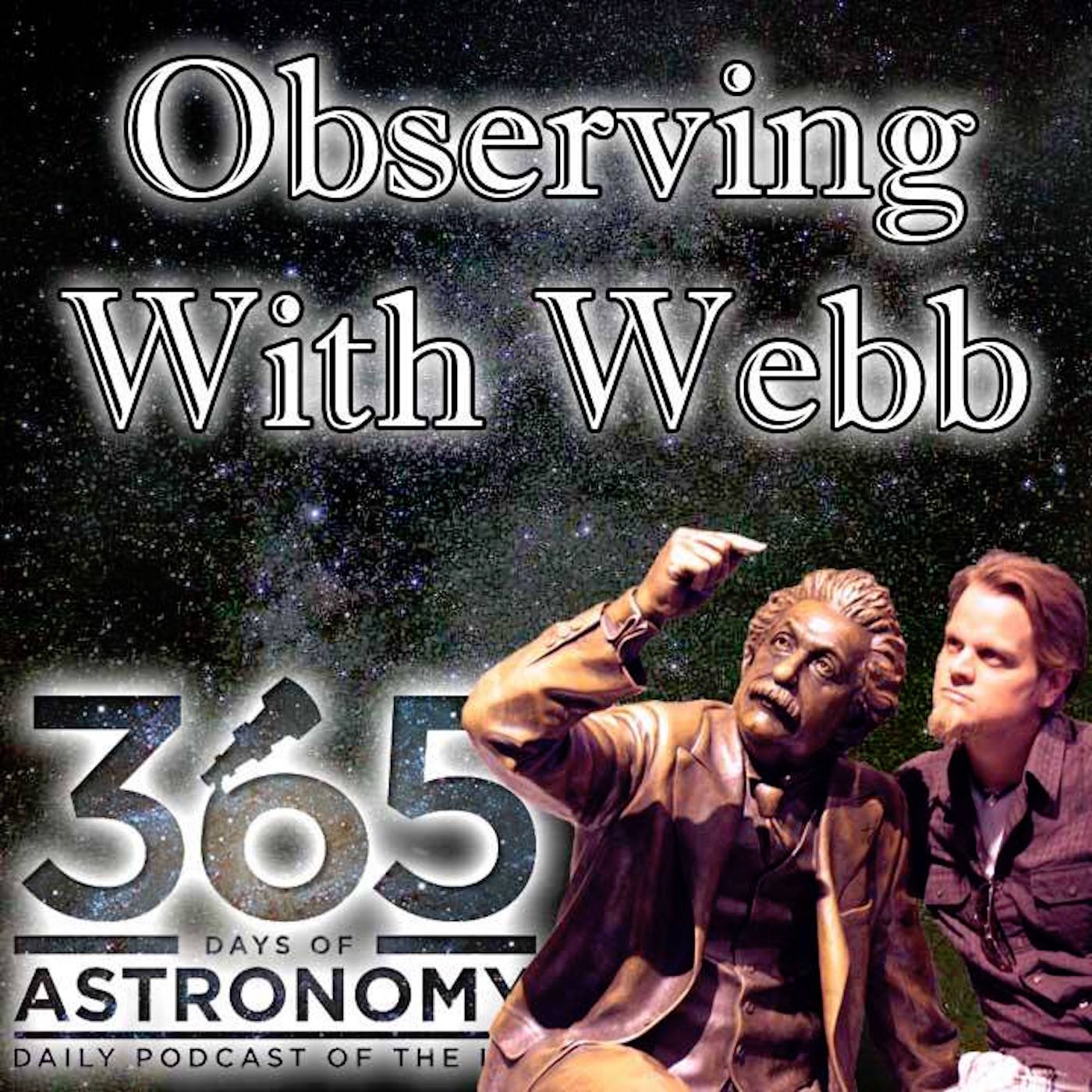Episodes

Sunday Aug 02, 2009
Observing with Webb August 2009
Sunday Aug 02, 2009
Sunday Aug 02, 2009
This month, the Perseid Meteor Shower takes place, which is usually a pretty good one to watch. Saturn and Mercury dance around each other just after sunset throughout the month while Venus and Mars highlight the morning sky. Read about the events of the month, where the planets are, and what constellations you can see down below. Have a question that you’ve always wondered about? Want to hear about a certain topic on the next podcast and in the next email? Send me a question either by replying to this email or sending me a message on podbean and I will include it next month. EVENTS... 7th – Penumbral lunar eclipse – However, it is a penumbral eclipse (the outside, dimmer portion of the earth’s shadow) and hence it is pretty much undetectable by the naked eye Full Moon – 5th (Green Corn Moon, Grain Moon) 11th/12th – Perseid Meteor Shower peaks. That's right! Want to romance your significant other? Bring 'em out for a night of wishing upon shooting stars. This is one of the very best meteor showers of the year, bragging 50-100 swift, bright meteors per hour during its peak. More information here Some advice for watching: Find a dark location Lie down in a reclining chair or swimming pool floaty Look toward Perseus (In the NNE around 9pm, rises throughout the night until sunrise where it will be almost directly above.) That is where the radiant is - where the meteors will appear to be coming from The strategy to observe this one is to start watching in the evening of the 11th and continue into the morning of the 12th. The shower is usually active from mid July to late August, so you may see some Perseids in the days leading up to the peak as well. Dress in multiple layers and bring hot chocolate Check the weather to see if the skies will be clear (weather.com has a good map here Adapt your eyes to the dark by staying away from light sources or using a red light if you need to look at a star chart or not trip over something. The moon will be a little more than halfway lit, so try not to look at that as it will also interfere with your night vision. New Moon – 20th (darkest skies) PLANETS...well, the ones visible with your naked eye Any conjunctions? Each day in the morning (in the east), Mars will slowly march away from Venus throughout August. The Moon joins them from the 16th-17th, making great opportunities for pictures. Around sunset this month (in the west), Mercury gets closer to Saturn until they are 3° degrees apart on the 17th, then Mercury moves away for the rest of the month. The Moon joins this party on the 21st and 22nd. The Moon also gets close to Jupiter on the 6th. Mercury – Getting further from the sun as it sets throughout the month. Between 20° and 25° to the left of the sun. Check after sunset in the WNW just above the horizon. If you know Leo, Mercury will be about ½° NNE of Regulus (Leo’s brightest star) on the 2nd of the month. VENUS – Visible in the AM in the east around 30° above the horizon around sunrise. Lower than 30° before sunrise. Travels through Gemini throughout the month. Remember…it’s VERY bright. Mars – Hanging out up and to the right of Venus for this month, too. Look to the east in the morning before sunrise (Mars rises between 2am and 1am), find Venus, then find the reddish “star” up and to the right about 15° to 30° away. It is in Taurus in the beginning in the month. JUPITER – Rises between 9pm and sunset and is visible almost all night low on the horizon in the south and southeast until sunrise. Extra Challenge! If you have a telescope, see if you can find the new black spot on Jupiter. This site has details for seeing it in July, maybe it’ll be updated for August. Saturn – Visible low on the horizon (about 20° up) in the west just after sunset in the beginning of the month and will get increasingly close to the horizon at sunset each until the end of the month when it is only 5° above the horizon at sunset. It sets quickly! After that, say goodbye to Saturn until October after it passes by the sun and enters the morning sky. CONSTELLATIONS... (see sky map link at the bottom for a Star Map for this month – or ask Mr. Webb) Look straight up and you'll see... Sunset (around 8:15pm) – Hercules – Extra Challenge! Use binoculars and a star chart and try to find the faint fuzzy that is the Hercules cluster of stars. Midnight – Cygnus, Lyra, Aquila (a little to the south) – The Summer Triangle (see general constellation finding tips below) Early Morning – Perseus, Aries GENERAL CONSTELLATION FINDING TIPS: Look straight up after 11pm and you’ll be able to see Lyra, Cygnus, Aquila, (and Delphinus.) These three constellations have the three brightest stars of the summer constellations (Vega, Deneb, Altair – respectively.) Those bright stars create the summer triangle, which will be seen earlier and earlier as the summer goes by. If you’re under dark skies (away from city lights) you may just catch a glimpse of the Milky Way passing through Cygnus and Aquila. Use a sky map from www.skymaps.com to help you out. A lot of credit for this information goes to: SkyMaps.com – Download the monthly sky map /www.skymaps.com/downloads.html" href="http://www.skymaps.com/downloads.html">here in many formats including Northern Hemisphere, Southern Hemisphere, and Equatorial Sky & Telescope Magazine ...and various sky programs such as Starry Night.


No comments yet. Be the first to say something!